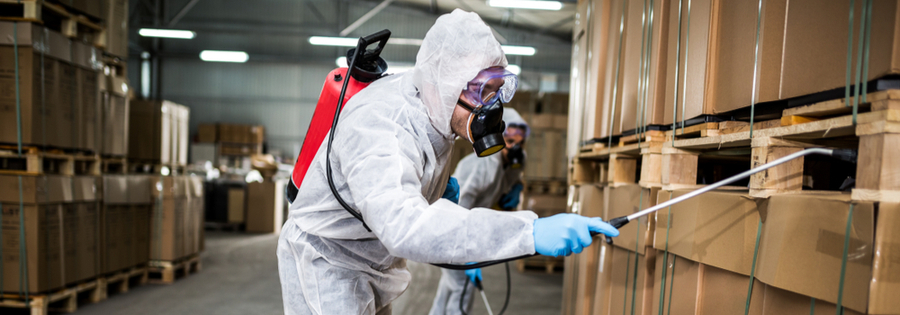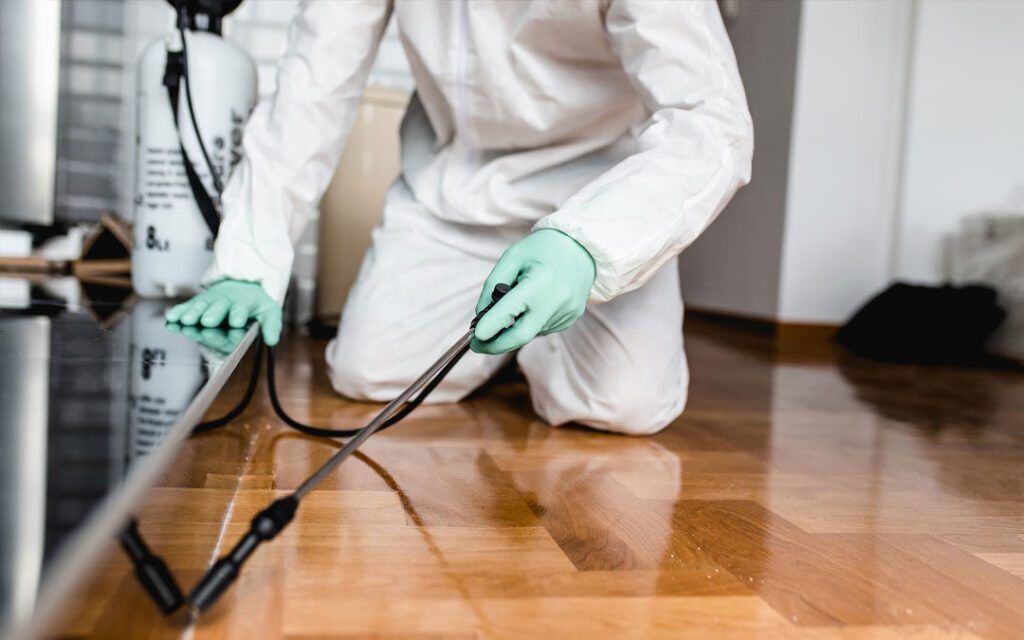Chicago Bug Infestation Removal: Fast and Efficient Pest Extermination
Chicago Bug Infestation Removal: Fast and Efficient Pest Extermination
Blog Article
A Comprehensive Guide to the Various Kinds Of Pest Control Methods
With the myriad of bug control approaches available, it can be frustrating to locate the most efficient remedy for a details insect problem. In this thorough guide, we will certainly explore these different kinds of pest control methods, using understandings right into their applications and benefits. By the end, you will have a more clear understanding of which approach may be the best fit for your bug control needs.
Chemical Insect Control Methods

One typical type of chemical pest control is pesticides. Pesticides target particular insects, such as mosquitoes, termites, or ants, and can be used both inside and outdoors.
An additional type of chemical pest control is rodenticides. These are chemical materials created to control populaces of rodents, such as rats and computer mice.
Weed awesomes, also known as herbicides, are one more sort of chemical bug control method. Herbicides are designed to precisely kill undesirable plants, referred to as weeds, without creating damage to preferable plants. They are frequently used in farming, landscaping, and gardening to regulate the development of unwanted plants.
While chemical pest control techniques can be very reliable in getting rid of pests, it is necessary to use them carefully and adhere to security guidelines. Overuse or misuse of chemical pesticides can have negative effects on human health and wellness and the atmosphere. It is important to use these approaches responsibly and consider alternative insect control methods whenever possible.
Biological Bug Control Approaches
Organic parasite control methods include making use of living organisms or natural materials to manage and manage pest populations. Unlike chemical techniques, which frequently count on artificial chemicals, organic control approaches utilize the natural opponents of insects to control their populations. This method is thought about even more eco-friendly and sustainable, as it decreases making use of unsafe chemicals and decreases the danger of chemical resistance.
One commonly utilized biological insect control technique is the intro of natural killers or bloodsuckers. For instance, ladybugs are presented to manage aphids, while particular wasp varieties are launched to target caterpillars. These killers and bloodsuckers prey on pests, lowering their numbers and preventing invasions.
One more biological control approach is making use of microorganisms. Certain microorganisms, infections, and fungis can be utilized to infect and eliminate details parasites. The bacterium Bacillus thuringiensis is typically made use of to manage caterpillars, as it produces contaminants that are lethal to these parasites.
Biological control approaches can also entail the use of scents or natural materials that disrupt the mating patterns of pests. By hindering their recreation, these methods assist to decrease pest populations with time.
While biological parasite control methods are usually effective, they might visit homepage call for longer periods to accomplish wanted results contrasted to chemical methods. In addition, cautious consideration has to be provided to the selection and launch of natural enemies to stop unintended injury to valuable microorganisms or environments.
Physical Insect Control Methods
To effectively take care of and manage pest populations, alternate insect control techniques understood as physical insect control methods are used. Another physical pest control approach is the installation of fencings or walls to maintain larger parasites, such as deer or rabbits, out of yards or agricultural areas. Physical parasite control techniques are an environmentally pleasant option to chemical pesticides, as they do not rely on the usage of dangerous chemicals.
Natural Insect Control Methods
All-natural parasite control techniques provide a lasting and green technique to managing and getting rid of bugs. These approaches focus on the use of all-natural materials and organic representatives, minimizing the requirement for chemical pesticides that can harm the environment and human health. One of the most typical natural parasite control techniques is organic control. This includes introducing natural predators or parasites to prey on or parasitize the pests. For instance, ladybugs are often presented to yards to manage aphid populaces. Another all-natural approach is using repellents acquired from plants. Particular plants, such as marigolds, lavender, and peppermint, discharge aromas that ward off pests like insects, flies, and ants. In addition, social control techniques can be used to prevent and manage insect invasions. This includes appropriate hygiene, regular maintenance, and advertising biodiversity in the yard. Turning crops, getting rid of garden debris, and motivating natural killers can aid ants protect against the build-up of pests. By embracing these all-natural pest control methods, people and communities can properly handle bugs while lessening the adverse influence on the atmosphere and human health and wellness.
Integrated Pest Monitoring (IPM)
Integrated Insect Monitoring (IPM) is a detailed and systematic technique to pest control that integrates different techniques and methods to successfully handle parasites while minimizing making use of chemical pesticides. IPM aims to maintain insect populaces listed below the economic injury degree by making use of a mix of social, biological, and chemical control methods.
Cultural control techniques include customizing the setting to make it much less favorable for insects. This can include methods such as crop turning, proper cleanliness, and using resistant plant selections. By developing unfavorable problems for pests, cultural control approaches can substantially decrease parasite populations.

Chemical control techniques are utilized as a last hope in IPM. They include the targeted and wise usage of pesticides to handle bug populaces. Unlike traditional parasite control approaches, cockroach killer IPM intends to reduce making use of chemical pesticides by using different approaches.
Integrated Parasite Monitoring (IPM) is an aggressive strategy that concentrates on long-lasting bug administration instead than depending exclusively on reactive measures. By incorporating multiple control methods, IPM gives a much more lasting and eco-friendly approach to pest control.
Conclusion
It reviewed chemical, biological, physical, and natural insect control techniques, as well as the incorporated parasite monitoring approach. By understanding these different techniques, individuals can make enlightened choices on which pest control method is most appropriate for their certain demands and preferences.
Report this page